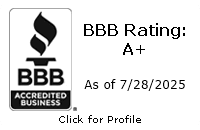SEO Guide for Moving Companies 2023
- Why do I need to invest in SEO?
- What is SEO?
- SEO Components for Content
- SEO Components for Google
- Design and UX (User Experience)
- Link Building
- Tracking and Measuring
- Executive Summary
In a day and age where the Internet reigns supreme, having your moving company appear on the first page of search results is the equivalent of having a penthouse in the middle of Manhattan. It is prime real estate that can be next to impossible to come by, not to mention expensive.
However, investing in SEO (search engine optimization) is an organic way to push your moving company ahead of your competitors and to generate new leads over a sustainable period of time. In this beginner’s guide to SEO, we will cover the essential components of SEO and how each of them helps to make your company more visible to potential customers.
Why do I need to invest in SEO?
- 95% of people do not go beyond the first page of Google Search Results, according to a study by InFront Webworks.
- You will only be reaching 5% or less of your potential audience if your company is only showing up on the second page of search results.
No matter how great your moving company may be, if people aren’t aware of it, they can’t work with you.
What is SEO?
SEO stands for search engine optimization, which is the practice of building and expanding your website in order for it to rank higher on search result pages. The higher your ranking is, the more traffic your website will receive.
To reach that high ranking, you must keep track of ever-changing media trends, updates to how search engines rank their pages, technological advancements, as well as how your audience is reacting to your content.
Investing in your website’s SEO is just another way of reaching your company’s goals:
- Generate Sales
- Serve Your Audience
- Build Relationships
- Increase Brand Reputation
Google ranks the most relevant and informative websites first, so making sure your content is of the highest quality and relevance is key in becoming a trustworthy source. The upkeep of your website’s content and SEO can be an arduous and complicated journey, but the results cannot be overstated.
SEO Components for Content
While there are many ways to improve your website’s SEO, let’s start by looking at ways you can improve your SEO through your content.
Keyword Strategies and Research
One of the best things you can do to push your website to the top of the rankings is by incorporating keywords into your content. “Keywords” are the words that people are entering into a search engine. It is essential that you know what your audience is searching for so that you can provide them with the right solutions.
For example, let’s say someone enters a Google Search looking for a “family-owned moving company.” You would want to highlight and incorporate those terms throughout your content when relevant, and eventually Google will associate your website with those keywords. It is important to note that you should only add keywords when it’s applicable. Stuffing keywords into everything even when it’s not relevant can actually hurt your SEO as Google can detect a website’s authenticity.
There are several tools you can use to gain insight into what keywords and phrases people are searching for, such as SEMRush, Ahrefs, and others. When using these tools, keep an eye out for that term’s search volume and competition.
- Search volume is how often that keyword or term was searched
- Competition will show you how difficult it will be to get to page 1 of the search results as a decimal between 0 and 1.
Your goal is to have a list of keywords that have a high search volume and competition of .6 or lower. Once you have a strong list, you can start incorporating them into your relevant content. Google will see that you’re providing trustworthy information related to the keywords and thus rank your website higher.
Producing high-quality content with keyword research in mind
Now that you know what keywords you need to focus on, you can begin the process of content creation. After putting in all that work to know which keywords are important to your industry, you will want to back them up with great content. If your website content is of high quality, your search result ranking will naturally become higher.
Starting off with the keyword research helps you prepare for what you need to highlight in your content. It also helps you plan an outline for the content, which means the writing will come that much easier.
When it comes to writing, break up big blocks of texts with…
- bullet points
- images
- graphs
This will make the content more digestible. Read it over several times to make sure the content is of the highest quality before handing it off to an editor. While having a fresh pair of eyes look over content is always necessary and useful, ideally the editor won’t have to make many changes before approving it.
SEO Components for Google
Now that you’ve implemented SEO practices into your content, it’s time to learn how to use these practices when it comes to on-page elements. Google has several factors they consider when ranking your website, but it is the combination of all of them that determines where your website will rank.
Title Tags
Title tags are the main headline that appears on a search engine results page (SERP). They’re the big, blue, clickable link that shows up on Google when you search something. Title tags don’t have to be the exact heading you used on your web page, but they should be similar and include a core keyword.
Title tags have a limit of 70 characters; any more will be cut off. You can use tools like the SERP tool to see how your Title Tags and Meta Descriptions would look on a SERP.
Meta Description
The meta description is the “fine print” that appears underneath the title tag on a SERP giving a small summary of what the webpage is about. Just like the title tag, the meta description should incorporate your core keyword. It should be no longer than 160 characters and you can use the same SERP tool to see how it would look on the SERP.

Image Alt Text
Image alternative text is basically a written-out description of what the image is. The alt text appears on the webpage if the image was unable to load properly. Also, if a blind person were using a screen reader, the screen reader would read the image alt text to them, so they know what’s happening on the webpage. Every image on your website should have accompanying alt text.
This is not just a good SEO practice, it makes your website more accessible to people who may have disabilities, which is a win-win for everyone.
SEO Site Structure
Site structure involves the overall setup and design of your website. It’s important to make sure that your website flows in a way that makes your content easier to find for Google bots, as well as users who want a functional website that is easy to navigate. After putting all that work into creating some stellar content, you have to make sure that search engines are finding it.
Information Architecture
Information architecture is the practice of organizing your site structure in a way that makes the most sense. You want your website to be as easy to navigate as possible for Google bots so they can determine your authority and how useful your information is. If your website is too difficult to navigate, Google isn’t going to search through it trying to find your content.
This is why it’s absolutely necessary that you optimize your site structure for SEO. Here are some of the key aspects required for building a strong site structure that is easy to navigate.
Page Indexing
When Google indexes a page, they run the page in an HTML format. Notably, this doesn’t include actual content. While indexing, these Google bots have no way of understanding the contents of an image or a flash file, which means that these regularly get ignored in the indexing process.
An XML sitemap is the most effective way to ensure that Google won’t miss any of your pages. This sitemap acts as a table of content that has links to every page on your site. This will make sure that search engines can efficiently crawl your site while finding every page, even ones that would otherwise be isolated.
URL Structure
Creating URLs with a clear path structure helps both Google and users navigate your website, making it easier for them to find your products or services. The URL should include a core keyword related to that page and should have a funnel system that leads you down to the specific product you are looking for.
Let’s say you’re creating separate webpages for tips for a local move and tips for a long-distance move. They should look something like this:
Movingcompany.com/moving/long-distance/tips
and
movingcompany.com/moving/local/tips
As opposed to a URL like movingcompany.com/tips, which would be two different web pages with the same URL. That could be confusing for google bots and users alike and end up hurting your SEO. Following the first path consistently helps search engine bots better understand your site structure.
Navigation
Your website’s homepage is where most people are going to go first when they visit your site. You want to make all of your website’s pages as simple and easy to get to from the home page as possible, with the least amount of scrolling or clicks.
Design and UX (User Experience)
Investing in your design and your website’s UX is essential in improving your website’s SEO. Making sure your website looks professional and easy to navigate encourages users to stay on your site. If people get confused or can’t find what they’re looking for on your website, they’ll move on to another.
Here are some things to keep in mind when looking at your website’s UX:
- People are impatient and if a page is taking too long to load or a video isn’t displaying properly, users aren’t going to wait long for them to work. Making sure everything is in good working order is just another step in improving your SEO.
- Functionality is essential when it comes to user experience. In a time where people are becoming more and more dependent on their cellphones, developing your website for mobile display is vital to your success. It should mimic the desktop version as closely as possible, but with the proper dimensions and proportions to make it properly fit a phone screen.
- Design improves UX. How you layout your content proves to be important. You want your content to be engaging and digestible, so you should steer clear of big, long, block paragraphs of text. Instead, break them up with bullet points, images, videos, quotes, and infographics, making the content more enjoyable for the user.
- Your UX improves your SEO. Having your users enjoy visiting your website encourages them to stay on it. This decreases your bounce rate-the percentage of people who leave the site after only viewing one page-which helps increase your conversion rate.
Link Building
Link building is the practice of linking to other pages on your website and is arguably one of the most important aspects of SEO.
Google sees links as a signal that your website is a trustworthy and informational source. For example, let’s say a major website like Amazon links to one of your pages. Google thinks of this link as an “endorsement” of sorts, and since a company like Amazon carries so much authority, that page now carries more authority as well.
Let’s go over some of the best strategies when it comes to link building.
- Internal linking
Internal linking is the process of linking to other pages on your own website. Linking your pages like this allows the user to keep traveling further and further into your website. This pushes users onto pages they may not have reached before, which helps to boost your SEO.
The key to internal linking is strategically linking to lesser-known pages from your high-performing pages. The pages on your site that gain the most traffic, usually your homepage and popular service or product pages, carry the most authority. Therefore, they can pass off the most authority and value to the less popular pages. Since the endorsement is coming from an authoritative page, Google sees those less popular pages as useful and relevant, boosting its SERP rank.
That’s not to say you should only place internal links on your top pages. Realistically, every page on your website should have a handful of internal links but linking from the home page is the best boost you can give to webpages that may be struggling. Make sure that no matter where you are placing links, they are always relevant and providing useful, trustworthy information.
- External linking
While external links (backlinks) are more valuable than internal links, they are also much more difficult to achieve. You must convince someone else that your moving company is worthy enough for them to endorse and link to. There are several ways to go about this, some more difficult than others.
Let’s break down the three main different types of backlinks.
- Self-Created, Non-Editorial Links
This type of link is the easiest to achieve, so Google sees them as the least valuable as they are not given editorially. A few examples of this type of link may be:
- Forum posts
- Blog comments
- User profiles
You should avoid these links altogether as chasing them can be considered a “black-hat SEO practice” that is aimed to trick the search engine into thinking the content is relevant. Google can and will penalize your website for this, so you should focus your attention on the following types of links.
- Manual Outreach Links
This is the, “you scratch my back, I’ll scratch your back,” type of link. It involves manually reaching out to another website or business and asking them to link to your site, usually in exchange for something that benefits them as well. Local government, an industry-specific directory, or companies you may have partnered with are a good place to start asking.
You can offer to write them a guest blog post in exchange for a link to your website, or you can offer to do the same with their business. The most important thing to remember is that it’s a two-way street. You want to offer the other company something in return so that they will want to help you.
- Natural Editorial Links
The best kind of links to get, these are also the most difficult and require the most creative backlinking strategy. Natural editorial links are links given out by other website owners of their own volition. Maybe you created a life-changing piece of content and shared it with a few influencers. They then shared that with other bloggers who post about it without your asking to. It takes a lot of networking and a slew of great content to be able to achieve these links, but they are invaluable to your business.
Tracking and Measuring
Once you have implemented some SEO practices, you can use tools like Google Analytics and SEMrush to see how your website is performing. These platforms provide an endless amount of data on your website users, but there are three main components you should always be tracking:
- Keyword search ranking
- Organic traffic
- Conversions
Keyword search ranking
This will show you where you rank on a SERP for a specific keyword in your market. Each time you perform keyword research to create a new blog or page, you can track those keywords to see if that page starts to reach the top of the SERP.
Keyword ranking gives you an idea of how effective your SEO practices have been while also showing you your competition.
Organic traffic
Organic traffic tells you how many people are coming to your website from a SERP, and it is one of the best indicators for how well your SEO is working. If you’re not seeing an increase in organic traffic, it’s best to put more dedication into your SEO.
Conversion Tracking
This shows you how many people completed a CTA, such as filling out a contact form or making a purchase. This is the tangible data that proves SEO practices work.
Executive Summary
Despite all the valuable information in this guide, this is just the beginning when it comes to mastering SEO. It takes a lot of trial and error to figure out which practices work best for your website. However, you should now have a good idea of where to start to improve your website.
In conclusion:
- Research your keywords and be strategic about where and when you use them in your content.
- Dedicate time and effort to your writing to ensure that it’s of the utmost quality and relevance.
- Make sure your on-page elements (title tags, meta descriptions, alt text, URLs) are fully set up and include your core keywords.
- Organize your website’s structure in a way that makes it easy for search engines to crawl through your website without getting confused.
- Design your website to give users a seamless, functional experience whether it be on their desktop or cellphone.
- Internally link to your own webpages.
- Engage with other companies and local businesses to help each other with backlinking opportunities.
- Track all of your improvements by watching data for keywords, organic traffic, and conversion rates.




